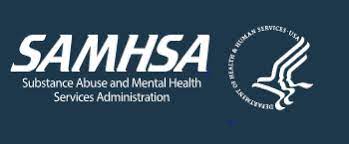
(6-3-21) When it comes to employee happiness, the federal agency responsible for mental illness and substance abuse programs has historically ranked at the bottom of federal polls – even years before COVID. A SAMHSA officials says it will be up to middle-management to find ways to boost morale. As with all guest blogs, the opinions are solely those of the writer.
SAMHSA’s Important Work Can Be Strengthened with Cultural Change
Guest blog by Mitchell Berger
For a decade the Substance Abuse and Mental Health Services Administration (SAMHSA), an operating division of the Department of Health & Human Services (HHS), has ranked near the bottom of the Partnership for Public Service’s Best Places to Work in the Federal Government which is based on data from the annually administered Federal Employee Viewpoint Survey.1
Currently, with the 2020 results pending, the Agency ranks number 417 out of 420 among Agency components and subcomponents.2
The federal government’s lead organization for mental health and substance use disorder must be at its best to effectively serve the vulnerable and traumatized populations that are the central focus of its mission. 3,4
In my view, the ultimate key to potential improvement at SAMHSA lies with its ‘middle management’ layer– the branch chiefs, team leads, office directors, special experts, senior advisors and division directors, and their equivalents — that layer of management which is most numerous and comprises those with whom SAMHSA staff most typically and frequently interact. 5,6
It is to these mangers whom many staff look day-to-day for guidance and leadership.
Setting Examples
These managers ideally should: set a good example for their subordinates of character and professionalism; facilitate mentoring and training; collaborate civilly and respectfully with their colleagues at all levels; share information across the Agency; and drive progress toward the Agency’s and HHS’ mission and goals. Middle managers, in turn, need support from the Agency’s senior leadership — but also accountability and clear conduct and performance standards for themselves and their subordinates.
With serious, substantive dedication at all levels SAMHSA can improve and leverage its earned standing and trust, from outside and within, to help effectively lead, coordinate and support our nation’s mental health and substance use disorder policies.
There are within SAMHSA many who would welcome a substantive effort to improve the agency’s culture and contribute to it.
For the sake of the vulnerable people SAMHSA is tasked to serve at a time when its work is needed more than ever, HHS and SAMHSA leadership, the Agency’s stakeholders and constituents and we as SAMHSA’s staff must raise our expectations and commit to needed change.
About the Author: Mitchell Berger, mazruia@hotmail.com. The author has been a Public Health Analyst/Advisor at SAMHSA since 2013. The opinions expressed are solely those of the author, have not been discussed with or reviewed by any current or former SAMHSA staff members and should not be imputed to any other individual nor to any public or private entity. 
References:
- Federal Employee Viewpoint Survey, Office of Personnel Management, https://www.opm.gov/fevs/about/. Accessed May 28, 2021.
- Best Places to Work Agency Rankings, Partnership for Public Service https://bestplacestowork.org/rankings/overall/sub. Accessed May 27, 2021.
- FY 2018 SAMHSA Reimagined, https://www.samhsa.gov/sites/default/files/samhsa_accomplishments_12_2_2018_edits.pdf. Accessed May 27, 2021.
- Who We Are, SAMHSA, https://www.samhsa.gov/about-us/who-we-are. Accessed May 27, 2021.
- Mark Samuel. Are Your Middle Managers Prepared to Lead Change? 30, 2016. https://marksamuel.com/2016/09/30/middle-management-the-secret-agents-for-culture-change/. Accessed May 27, 2021.
- The Economy’s Last, Best Hope: Superstar Middle Managers. April 24, 2019. Wall Street Journal. https://www.wsj.com/articles/the-economys-last-best-hope-superstar-middle-managers-11553313606. Accessed May 27, 2021.



